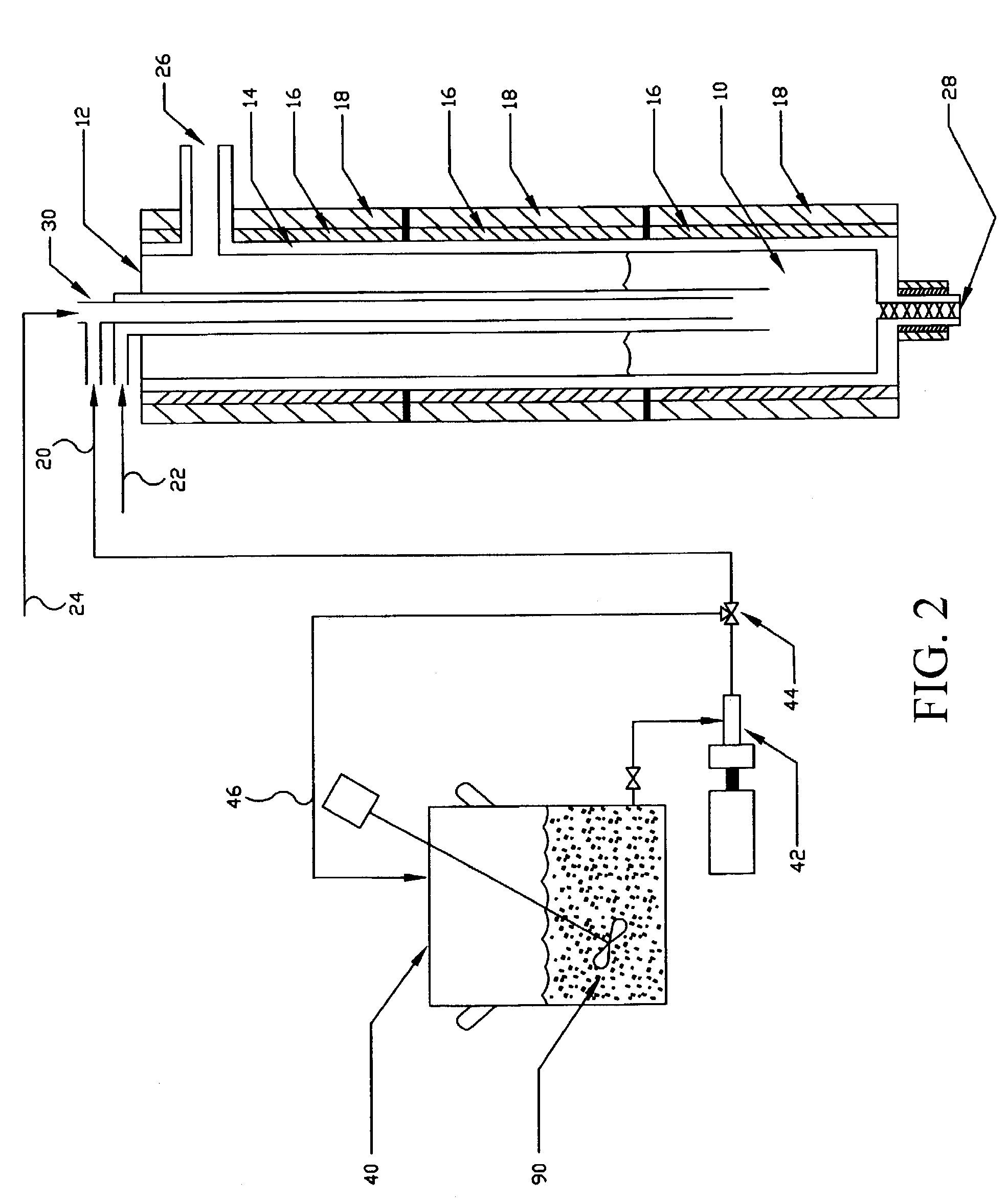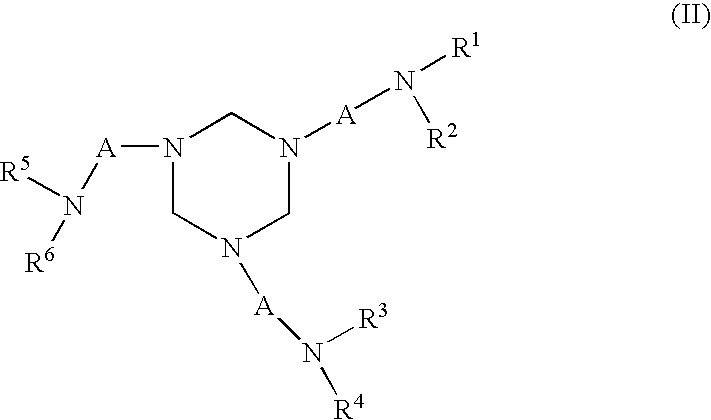Glycols as an adjuvant in treating wastes using the Molten Salt Oxidation process
a technology of molten salt and adjuvant, which is applied in the direction of hydrogen sulfide, separation process, explosion, etc., can solve the problems of affecting both suppliers and customers, affecting the quality of eucalyptus pulp, so as to reduce/eliminate the potential for smelt-water explosion, good combustibility, and low volatility
- Summary
- Abstract
- Description
- Claims
- Application Information
AI Technical Summary
Benefits of technology
Problems solved by technology
Method used
Image
Examples
Embodiment Construction
[0016]The present invention is a processing fluid and method of using the same for safely and effectively treating water-wet hogout propellant as well as any other water-wet wastes using the MSO process.
[0017]Using the water-wet hogout propellant as an example, solid rocket propellant upon expiration of its service life is removed from the rocket motor casing by a high-pressure water jet. The resulting waste, referred to as “hogout propellant”, typically contains a large excess of water. In order to prepare the hogout propellant for treating it using the MSO process the excess water is removed. However, it is not possible to remove 100 percent of the water from the hogout propellant in the dewatering process.
[0018]Feeding wastes containing liquid water into the molten carbonate bath used in the MSO process has the potential for a destructive “smelt-water” explosion. “Smelt-water” explosions are not completely understood, but they are known to be physical (i.e. flameless) explosions ...
PUM
 Login to View More
Login to View More Abstract
Description
Claims
Application Information
 Login to View More
Login to View More - R&D
- Intellectual Property
- Life Sciences
- Materials
- Tech Scout
- Unparalleled Data Quality
- Higher Quality Content
- 60% Fewer Hallucinations
Browse by: Latest US Patents, China's latest patents, Technical Efficacy Thesaurus, Application Domain, Technology Topic, Popular Technical Reports.
© 2025 PatSnap. All rights reserved.Legal|Privacy policy|Modern Slavery Act Transparency Statement|Sitemap|About US| Contact US: help@patsnap.com



